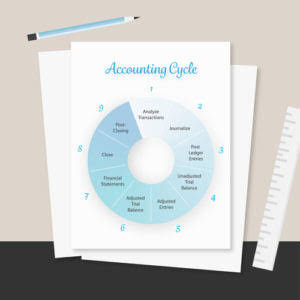
The transfer from revaluation surplus to retained earnings is not made through profit or loss. At the end of 20X6, the cost of the production process is CU2,100 (CU100 expenditure recognised at the end of 20X5 plus CU2,000 expenditure recognised in 20X6). The entity recognises an impairment loss of CU200 to adjust the carrying amount of the process before impairment loss (CU2,100) to its recoverable amount (CU1,900).
Useful life
There are certain cases where an asset contains both tangible and intangible elements. You need to make use of sound judgment to understand whether to treat such an asset as intangible or not. In addition to this, you must review the period of amortization at least annually. Also, the amortization amount is shown in your Profit and Loss Statement. Provided IFRS does not require that such a charge must be included in the cost of any other asset.
- The capitalisation cut off is determined by when the testing stage of the software has been completed and the software is ready to go live.
- Any directly attributable cost of preparing the asset for its intended use.
- This Standard requires an entity to recognise an intangible asset if, and only if, specified criteria are met.
- The entity is able to demonstrate that, at 1 December 20X5, the production process met the criteria for recognition as an intangible asset.
- Although intellectual capital is becoming more and more important economically, valuing intangible assets from an investment standpoint can be tricky.
- An entity shall apply that amendment for annual periods beginning on or after 1 July 2014.
IFRIC 3 — Emission Rights (withdrawn)
The future economic benefits may result from synergy between the identifiable assets acquired or from assets that, individually, do not qualify for recognition in the financial statements. An intangible asset with a finite useful life is amortised (see paragraphs 97–106), and an intangible https://www.bookstime.com/articles/what-is-expense-management-automation asset with an indefinite useful life is not (see paragraphs 107–110). The Illustrative Examples accompanying this Standard illustrate the determination of useful life for different intangible assets, and the subsequent accounting for those assets based on the useful life determinations.
Measurement subsequent to acquisition: cost model and revaluation models allowed
The accounting for a lease depends on whether it is a capital lease or an operating lease. The proper accounting for capital leases for both lessees and lessors has been an extremely difficult problem. We leave further discussion of capital leases for an intermediate accounting text. When purchasing a patent, a company records it in the Patents account at cost.

Financial securities, such as stocks and bonds, are also considered tangible assets even though they can’t be held. Any unauthorized use of someone else’s intellectual intangible assets do not include: property is called infringement. This includes using (intentionally or unintentionally), mimicking, or copying another entity’s brand name, logo, or other assets.

Thus, Intangible Assets are identifiable non-monetary assets that do not hold any physical substance. Furthermore, assets are called Intangible Assets only if they meet certain recognition criteria as defined in IAS 38 – Intangible Assets. Amortization is an accounting technique that lets businesses deplete the value of certain intangible assets over time. When it comes to assets, this accounting technique can also be referred to as depreciation. In contrast, intangible assets that have been acquired are shown on the balance sheet. This is, in part, because the purchaser perceives value in the intangible assets of the company it’s buying so is prepared to pay more than the cost of the physical assets.
International Valuation Standards Council (IVSC)
- Some consumers may choose to ignore pricing and pay more for one company’s product out of loyalty even if it is priced higher than a similar product offered by a competitor.
- Government grants may be in the form of a specific grant that includes specific requirements/stipulations such as employment levels or pollution control levels.
- An entity shall apply that amendment when it applies IFRS 10 and IFRS 11.
- R&D activities do not include routine or periodic alternatives to existing products, production lines, manufacturing processes, and other ongoing operations even though these alterations may represent improvements.
- The fact that an active market no longer exists for a revalued intangible asset may indicate that the asset may be impaired and that it needs to be tested in accordance with IAS 36.
- Unidentifiable intangible assets are those that cannot be physically separated from the company.
Overall, a company’s ability to give accurate valuations to its intangible assets is a good indicator of its ability to manage the business successfully. Lifespan is important when valuing intangible assets because it helps a business understand how to evaluate their usefulness in terms of profitability. Intangible assets also have much to offer by way of competitive advantage since they help create perceived customer value. This comes into play when a business is bought or sold, as intangible assets add value beyond the book value of the tangible assets. Since intangible assets are by nature hard to define, their importance to a company can also be difficult to quantify.
Intangible Assets: A Hidden but Crucial Driver of Company Value – Visual Capitalist
Intangible Assets: A Hidden but Crucial Driver of Company Value.
Posted: Tue, 11 Feb 2020 08:00:00 GMT [source]
An Example of a Balance Sheet:
The cost of generating an intangible asset internally is often difficult to distinguish from the cost of maintaining or enhancing the entity’s operations or goodwill. For this reason, internally generated brands, mastheads, publishing titles, customer lists and similar items are not recognised as intangible assets. The costs of generating other internally generated intangible assets are classified into whether they arise in a research phase or a development phase. Development expenditure that meets specified criteria is recognised as the cost of an intangible asset. IFRS 3 (as revised in 2008) amended paragraphs 12, 33–35, 68, 69, 94 and 130, deleted paragraphs 38 and 129 and added paragraph 115A. Improvements to IFRSs issued in April 2009 amended paragraphs 36 and 37.









